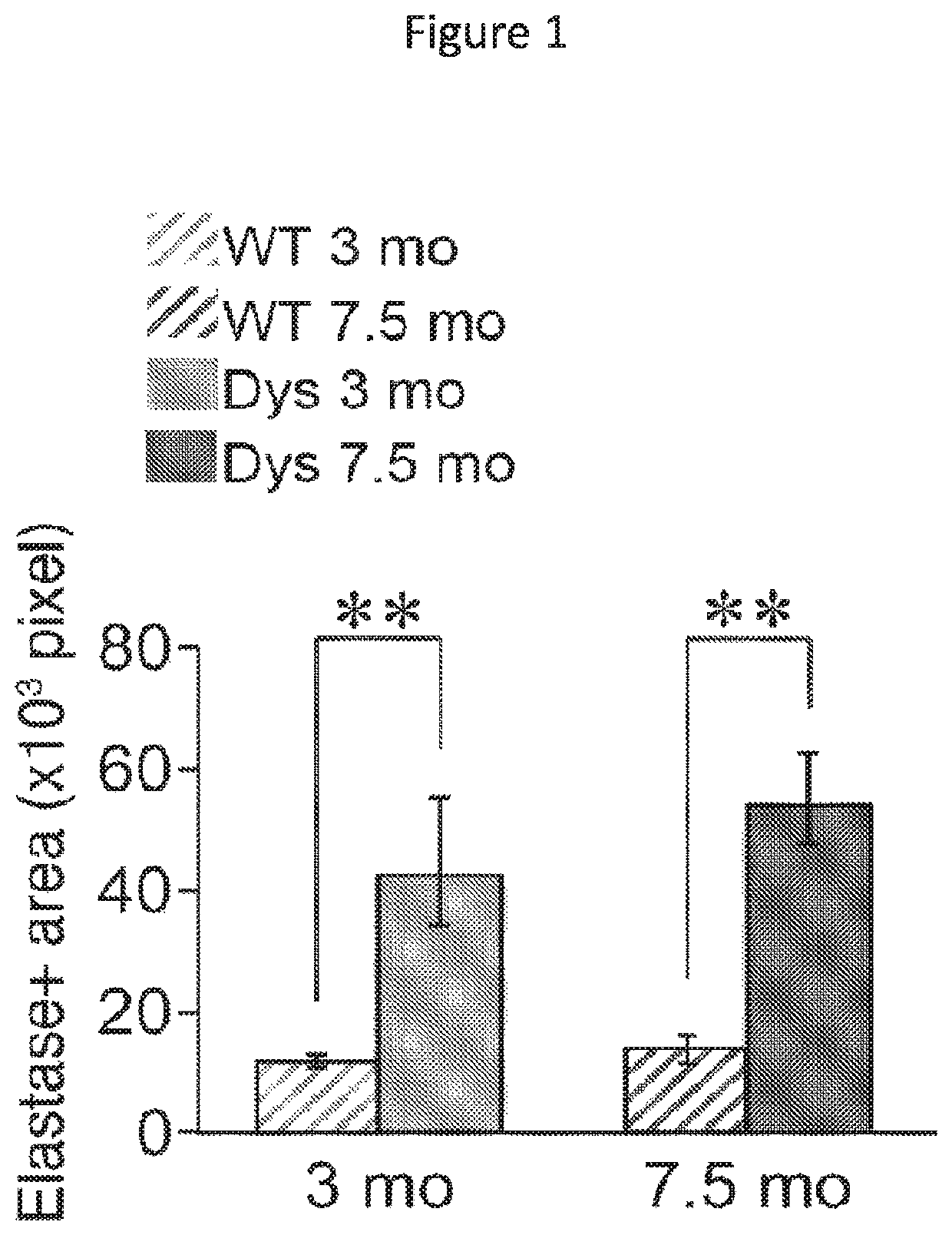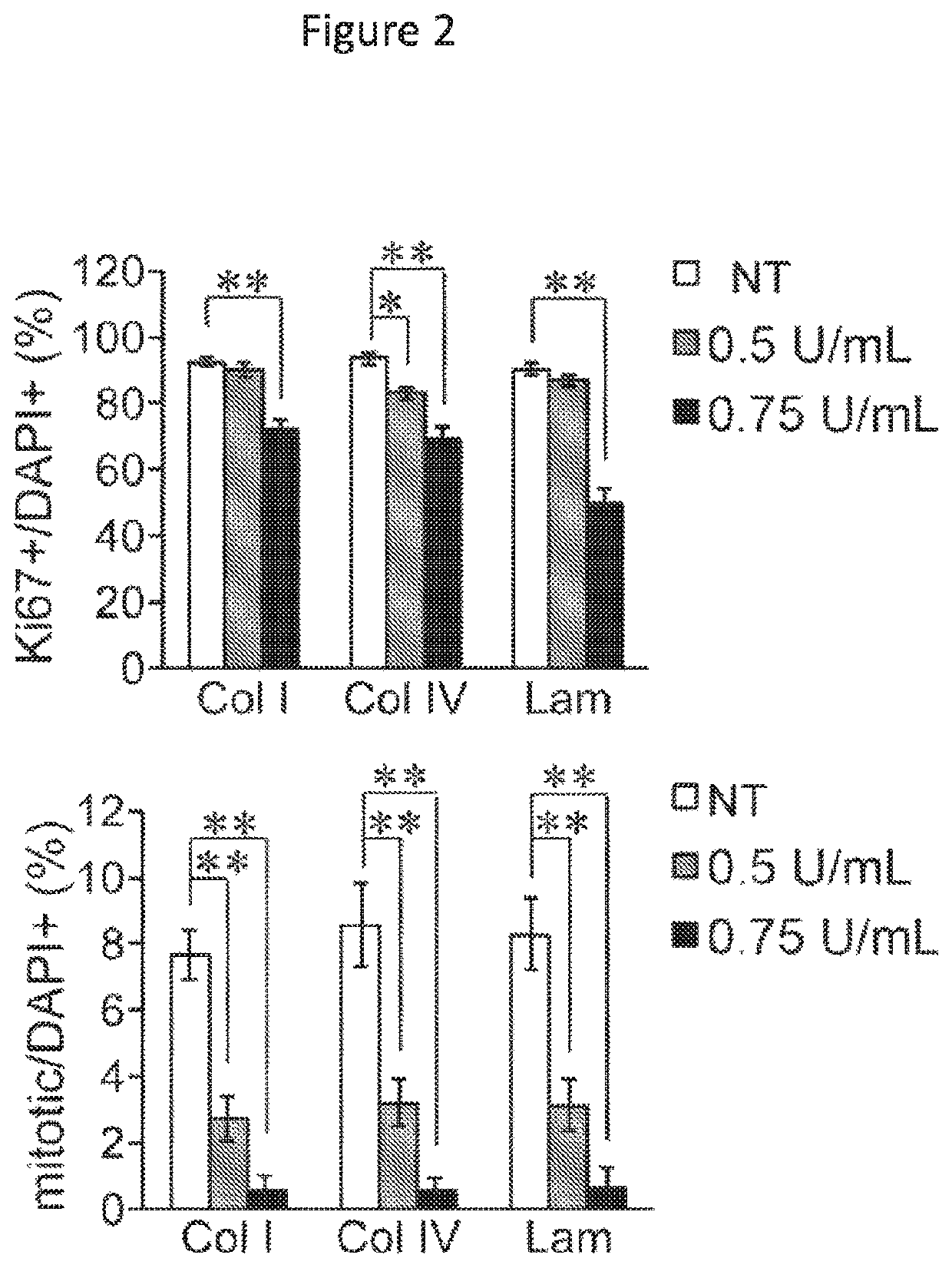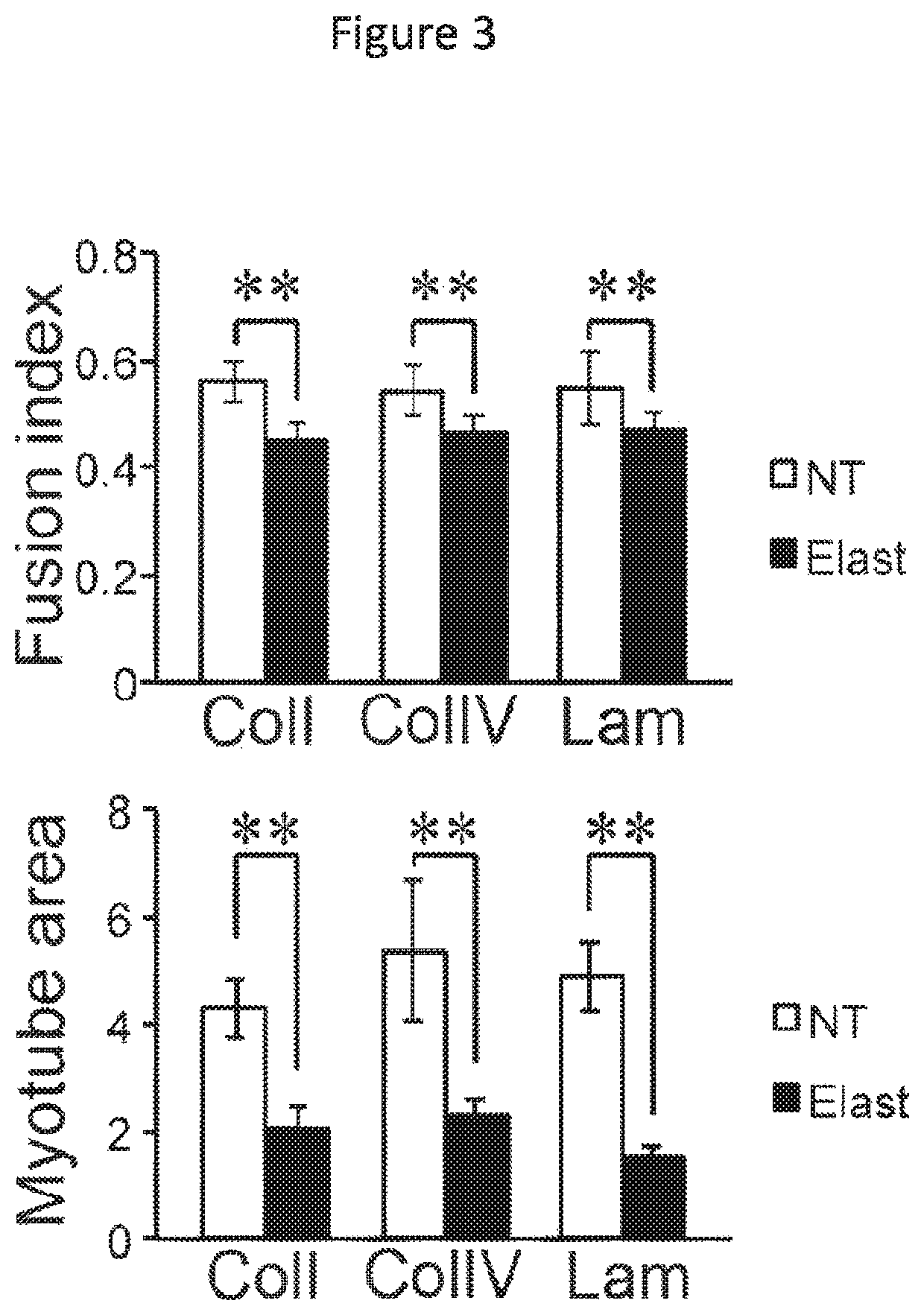Muscle regeneration
a technology of muscle regeneration and elastase, applied in the direction of enzyme inhibitors, peptide/protein ingredients, drug compositions, etc., can solve the problems of muscle cell death, skeletal muscle, muscle fibres becoming very sensitive to contraction-induced stress, and easy damage to muscles
- Summary
- Abstract
- Description
- Claims
- Application Information
AI Technical Summary
Benefits of technology
Problems solved by technology
Method used
Image
Examples
examples
1.1 Elastase Levels are Increased in Dystrophic Muscle
[0092]To study the impact of dystrophy-induced chronic elastase presence on muscle regeneration, we used a mouse model of Duchenne muscular dystrophy, the mdx4cv mouse strain. We collected muscle tissue from mdx4cv mice and sex- and age-matched wild type mice at two ages (3 and 7.5 months) and probed wild type and mdx4cv muscles with an antibody that detects neutrophil elastase. While wild type muscle sections contained elastase only around blood vessels, an accumulation of elastase around and inside muscle fibres was observed in dystrophic muscle sections. When quantified, the amount of elastase staining detected in dystrophic mice of 3 and 7.5 months of age was greater than the amount detected in wild type mice of the same age (FIG. 1). Importantly, the amount of elastase accumulated in dystrophic muscles from 7.5 month-old mice appeared to be greater than the amount detected in younger dystrophic mice, suggesting that elastase...
PUM
| Property | Measurement | Unit |
|---|---|---|
| pH | aaaaa | aaaaa |
| emission wavelength | aaaaa | aaaaa |
| excitation wavelength | aaaaa | aaaaa |
Abstract
Description
Claims
Application Information
 Login to View More
Login to View More - R&D
- Intellectual Property
- Life Sciences
- Materials
- Tech Scout
- Unparalleled Data Quality
- Higher Quality Content
- 60% Fewer Hallucinations
Browse by: Latest US Patents, China's latest patents, Technical Efficacy Thesaurus, Application Domain, Technology Topic, Popular Technical Reports.
© 2025 PatSnap. All rights reserved.Legal|Privacy policy|Modern Slavery Act Transparency Statement|Sitemap|About US| Contact US: help@patsnap.com



